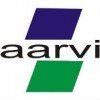Filter interviews by
M A Consulting Services Senior MEP Engineer Interview Questions and Answers
M A Consulting Services Senior MEP Engineer Interview Experiences
1 interview found
I was interviewed in Aug 2023.
(2 Questions)
- Q1. Work experience How many projects done in mivan
- Q2. Will you Re locate your current living city
(1 Question)
- Q1. About salary and Benefits
Top trending discussions






Interview questions from similar companies

I applied via Naukri.com and was interviewed in Oct 2021. There were 3 interview rounds.
Interview Questionnaire
1 Question
- Q1. Salary basis after 5 years experience
Interview Preparation Tips

I applied via Company Website and was interviewed in Feb 2021. There were 3 interview rounds.
Interview Questionnaire
6 Questions
- Q1. Soil mechanics
- Q2. Pile foundation
- Q3. Steel and concrete i.s code
- Q4. Aggregate testing
- Q5. Pipeline
- Q6. Welding , tine, grading, survey etc
Interview Preparation Tips
M A Consulting Services Interview FAQs
Tell us how to improve this page.
M A Consulting Services Interviews By Designations
Interview Questions for Popular Designations
- MEP Engineer Interview Questions
- Site Engineer Interview Questions
- Civil Site Engineer Interview Questions
- Civil Engineer Interview Questions
- Planning Engineer Interview Questions
- Senior Civil Engineer Interview Questions
- Junior Engineer Civil Interview Questions
- Senior Project Engineer Interview Questions
- Show more
M A Consulting Services Senior MEP Engineer Interview Process
based on 1 interview
Interview experience
Interview Questions from Similar Companies
M A Consulting Services Senior MEP Engineer Reviews and Ratings
based on 1 review
Rating in categories
|
Senior Engineer
5
salaries
| ₹6 L/yr - ₹7.7 L/yr |
|
Senior MEP Engineer
4
salaries
| ₹6.4 L/yr - ₹8.1 L/yr |
|
Safety Officer
4
salaries
| ₹4.4 L/yr - ₹5.5 L/yr |
|
Junior Engineer Civil
4
salaries
| ₹2.5 L/yr - ₹3.6 L/yr |
|
Structural Design Engineer
4
salaries
| ₹4.7 L/yr - ₹11 L/yr |

Randstad

Team Lease

Innovsource Services

Aarvi Encon
- Home >
- Interviews >
- M A Consulting Services Interview Questions >
- M A Consulting Services Senior MEP Engineer Interview Questions











